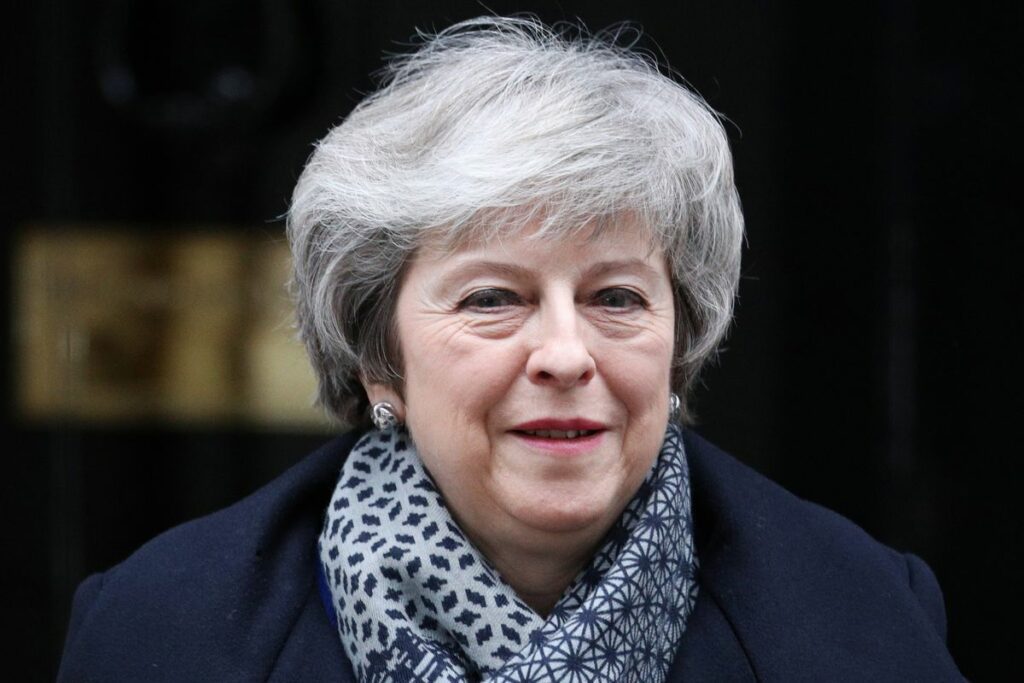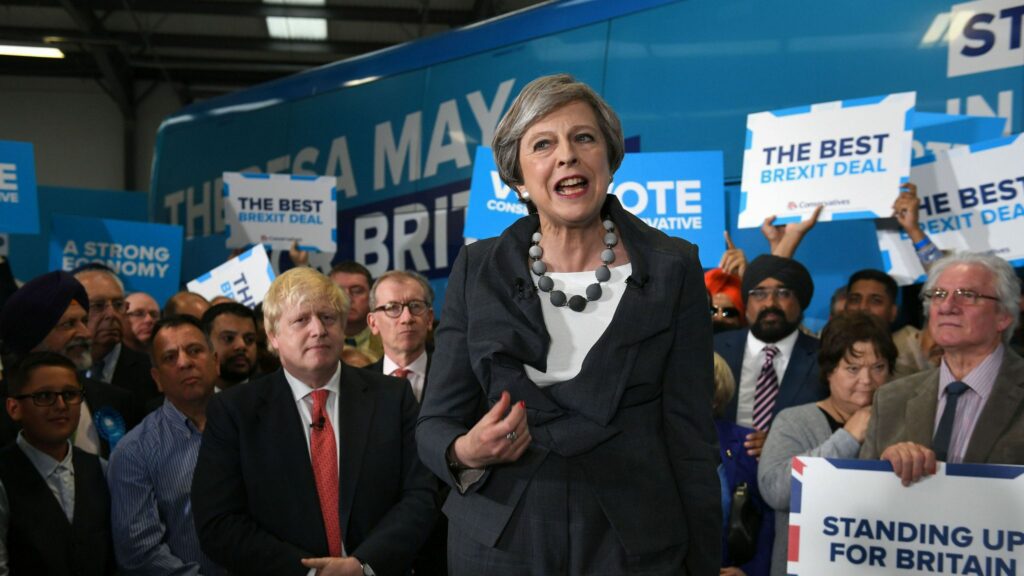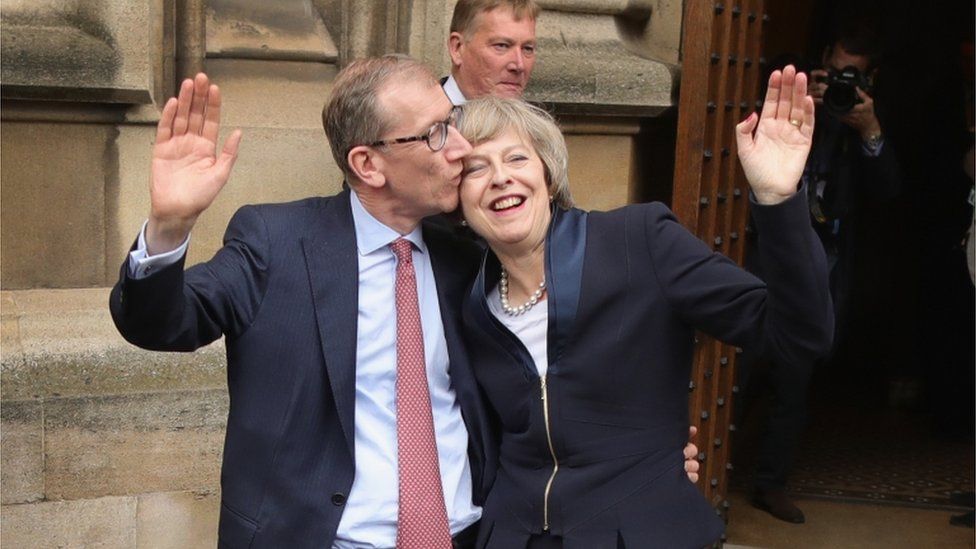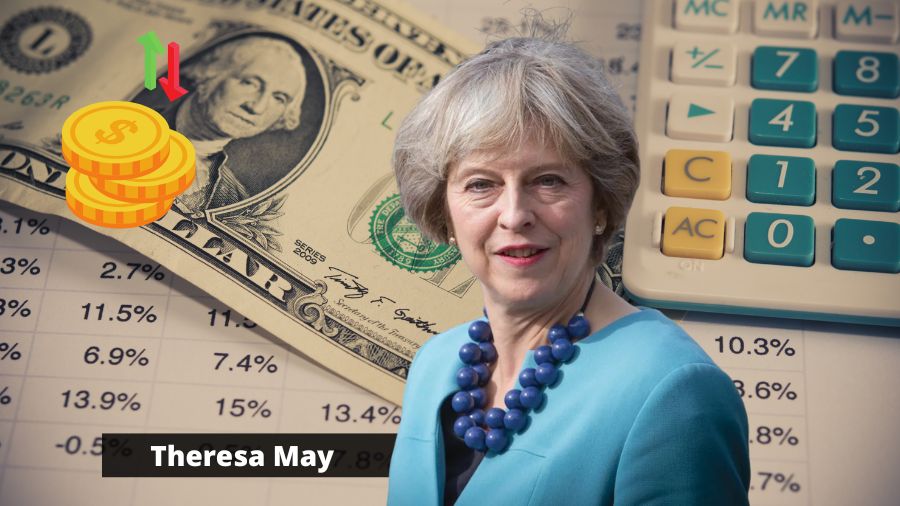Theresa May Net Worth – Theresa May is among the most prominent names in British politics. She has been the MP for Maidenhead in Berkshire since 1997 and served as Home Secretary in the Cameron government from 2010 to 2016.
Between 2016 and 2019, she led the United Kingdom as its prime minister, making her the first woman to hold that position since Margaret Thatcher.
Theresa May Net Worth 2023

As of 2022, Theresa May net worth is estimated at around $5 million.
She receives a monthly salary of about $30,000 with a total annual income of almost $400,000, thanks to her position as a Member of Parliament for Maidenhead.
Theresa May is a seasoned politician and banker who has served as leader of the Conservative Party, Home Secretary, Maidenhead MP, Prime Minister of the United Kingdom, and Chairman of the Conservative Party, all of which have contributed to the substantial wealth she now enjoys.
Theresa May Bio and Career
British politician Theresa May was prime minister of the United Kingdom from July 2016 until July 2019. She succeeded David Cameron during a time of political uncertainty following Britain’s withdrawal from the European Union and is the second woman to serve as Prime Minister of the United Kingdom, following fellow Conservative Margaret Thatcher.
Theresa May Early Life
She was born on October 1, 1956, in Eastbourne, England, UK, to parents Zaidee Mary and Hubert Brasier, a minister in the Church of England. She attended Holton Park Girls’ Grammar School, then continued her education at Oxford University, enrolling at St. Hugh’s College to major in geography.
She started working in banking, and then some years later, she became a member of the APCS. She entered politics in the 1980s and spent the better of a decade as a councilor for the London borough of Merton. Her interest in politics grew, and in 1992 and 1994, she tried and failed to enter the “House of Commons. However, Her fortunes improved in the 1997 general election, when she was elected as the Member of Parliament for Maidenhead.
Theresa May Political Career

She was given the position of education and employment secretary in the ‘Shadow Cabinet’ of 1999 and was assigned to oversee transportation issues after the 2001 election. She became a prominent politician by the turn of the millennium and chaired as the first woman to lead the Conservative Party in July 2002. Success followed, and in 2010, Prime Minister David Cameron named her Home Secretary and Minister for Women and Equality.
She later joined the “National Security Council” as Home Secretary, where she reversed many of the Labour government’s efforts on data gathering and monitoring in England and Wales. During her presidency, the “Identity Documents Act of 2010” was passed, thus ending the “National Identity Card” and associated database program instituted by the previous Labour government.
May also have strong views on immigration and, in 2010, pledged to reduce net migration to below 100,000 and also disagreed with the EU’s idea to set mandatory refugee quotas.
The United Kingdom decided to leave the European Union in a referendum held in June 2016, prompting Prime Minister David Cameron to announce his departure. Theresa May declared her intention to run for leader of the Conservative Party and was backed by several cabinet members, including Amber Rudd, Chris Grayling, Justine Greening, Jeremy Hunt, Michael Fallon, and Patrick McLoughlin.
On July 11, 2016, after a successful vote and the withdrawal of a competing candidate, Andrea Leadsom, she was declared leader of the Conservative Party, and on July 13, 2016, Theresa May became the second woman to lead the United Kingdom after Margaret Thatcher.
Concerned about the safety of the United Kingdom, May called for a snap election in 2017, which she won with a two-thirds majority.
Following this, she unveiled the Conservative manifesto in Halifax, where she pledged to implement significant reforms to the country’s finances, infrastructure, social services, and New Sovereign wealth funds.
By the beginning of 2018, May had already suffered multiple setbacks from the so-called “European Union” regarding her stance on Brexit, and May’s government was charged with contempt of Parliament on December 4, 2018, for failing to provide any legal advice on the UK’s exit from the European Union.
May’s leadership faced a “vote of no confidence” on December 12, 2018, after widespread criticism of her handling of the United Kingdom’s exit from the European Union, and May announced her retirement as leader of the “Conservative Party” on May 24, 2019. On July 24, 2019, May resigned as the PM and was succeeded by her former Foreign Secretary, Boris Johnson.
Theresa May’s Husband

Theresa met Sir Philip May when they were both undergraduates at Oxford at a student gathering and hit it off over a mutual love of cricket. Theresa’s father, Hubert Brasier, officiated their wedding on September 6, 1980, and since then, they have been happily living together.
After earning his degree from Oxford, Philip May immediately entered the financial sector, working as a fund manager at de Zoete & Bevan, Prudential Portfolio Managers, and Deutsche Asset Management. He later joined the Capital Group in 2005 as a relationship manager. As stated on his LinkedIn profile, he used to work mostly in pension fund and insurance relationship management.
His wife represents the Maidenhead constituency, and he helped persuade voters there before the by-election in Copeland in 2017. Although he did not serve in an official advisory capacity to the Prime Minister, Philip May was nonetheless considered by some to be her “most trusted adviser” after the Prime Minister consulted with him before she announced the snap general election in 2017 and before giving her speech at the 2016 Conservative Party Conference.
He was knighted in Boris Johnson’s Dissolution Honours in July of 2020, and in October 2021, the Prince of Wales formally presented him with the award.
You may like to read –
Closing Comments
There you have it – a detailed article covering Theresa May’s net worth, early life, career, and husband. With that said, here I am wrapping up this article. If you have any questions, feel free to shoot them in the comment section below. Our team will try to respond ASAP.
Enter your email to stay updated with offers
If you can’t see the form above, click here to open the form.







Add Comment